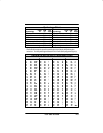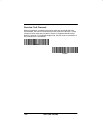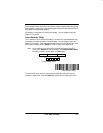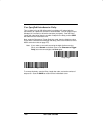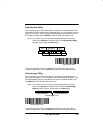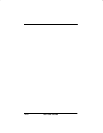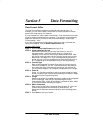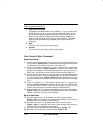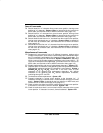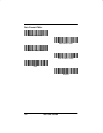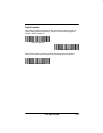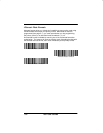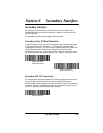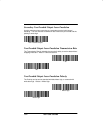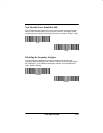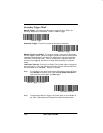
5–
3
7837 User’s Guide
Search Commands
F8 Search ahead for “xx” character from current cursor position, leaving cursor
pointing to “xx” character.
Syntax = F8xx
(xx stands for the hex value for an
ASCII code, see Decimal to Hex to ASCII Conversion chart, page 4–5.)
F9 Search back for “xx” character from current cursor position, leaving cursor
pointing to “xx” character.
Syntax = F9xx
(xx stands for the hex value for an
ASCII code, see Decimal to Hex to ASCII Conversion chart, page 4–5.)
E6 Search ahead for the first non “xx” character from the current cursor position,
leaving cursor pointing to non “xx” character.
Syntax = E6xx
(xx stands for
the hex value for an ASCII code, see Decimal to Hex to ASCII Conversion
chart, page 4–5.)
E7 Search back for the first non “xx” character from the current cursor position,
leaving cursor pointing to non “xx” character.
Syntax = E7xx
(xx stands for
the hex value for an ASCII code, see Decimal to Hex to ASCII Conversion
chart, page 4–5.)
Miscellaneous Commands
FB Suppress all occurrences of up to 15 different characters, starting at the
current cursor position, as the cursor is advanced by other commands. When
the FC command is encountered, the suppress function is terminated. The
cursor is not moved by the FB command. Syntax = FBNNXXYY . .ZZ where
NN is a count of the number suppress characters in the list and XXYY .. ZZ
is the list of characters to be suppressed. (xx stands for the hex value for an
ASCII code, see Decimal to Hex to ASCII Conversion chart, page 4–5.)
FC Disable suppress filter and clear all suppressed characters.
Syntax = FC.
E4 Replaces up to 15 characters in the data string with user specified characters.
Replacement continues until the E5 command is encountered.
Syntax =
E4NNXX
1
XX
2
YY
1
YY
2
...ZZ
1
ZZ
2
where NN is the total count of both
characters to be replaced plus replacement characters; XX
1
defines
characters to be replaced and XX
2
defines replacement characters,
continuing through ZZ
1
and ZZ
2
.
E5 Terminates character replacement.
Syntax = E5.
FE Compare character in current cursor position to the character “xx.” If
characters are equal, increment cursor. If characters are not equal, no format
match.
Syntax = FExx
(xx stands for the hex value for an ASCII code, see
Decimal to Hex to ASCII Conversion chart, page 4–5.)
EC Check to make sure there is an ASCII number at the current cursor position.
If character is not numeric, format is aborted.
Syntax = EC
.
ED Check to make sure there is a non-numeric ASCII character at the current
cursor position. If character is numeric, format is aborted.
Syntax = ED
.



